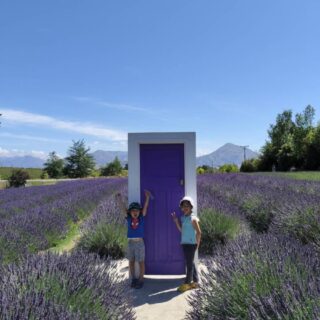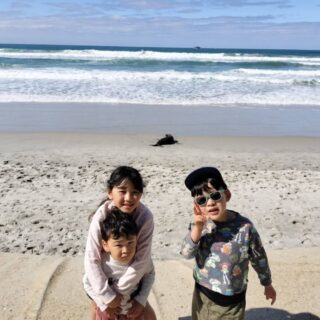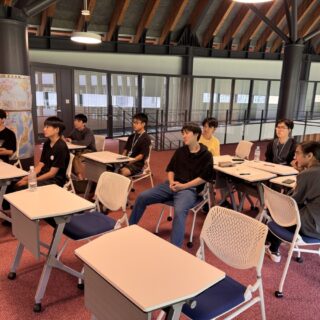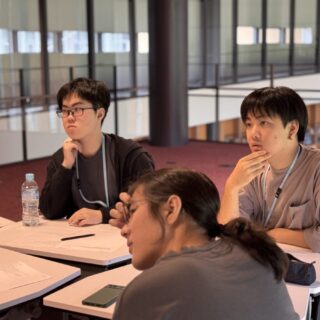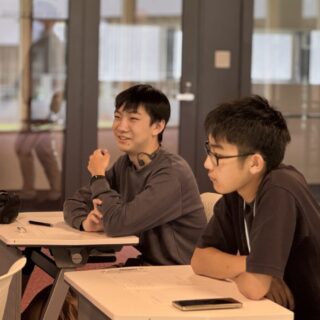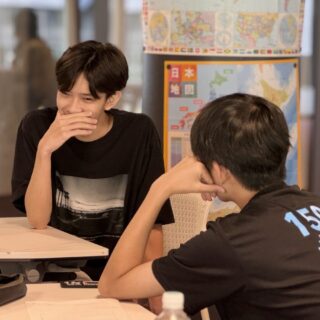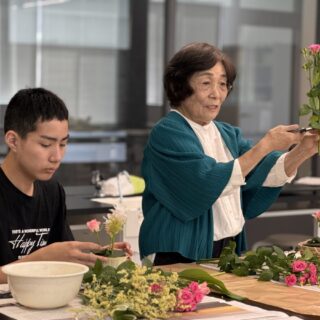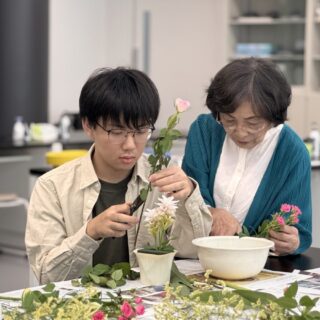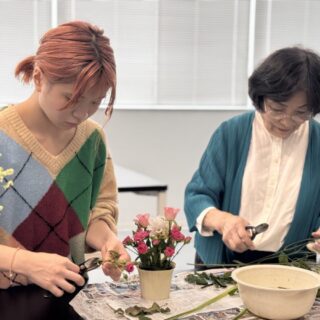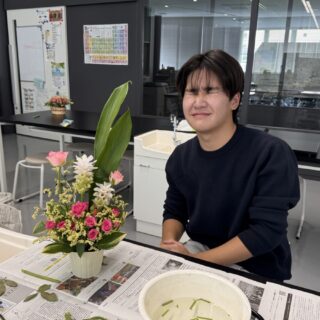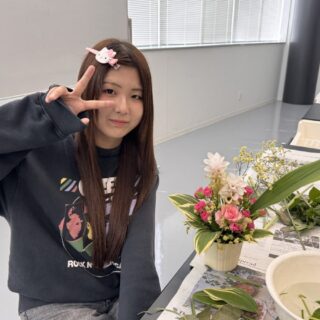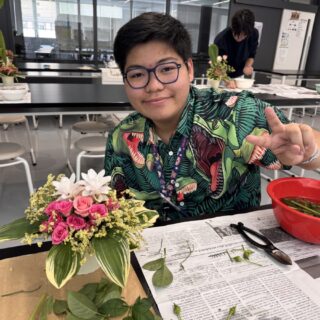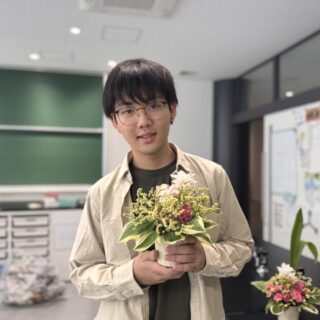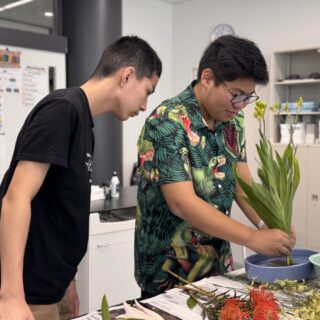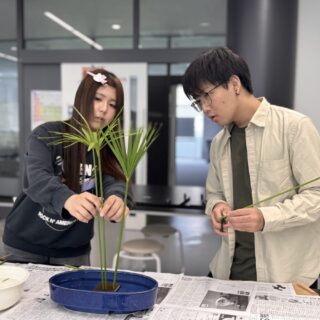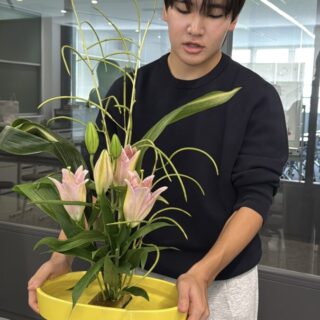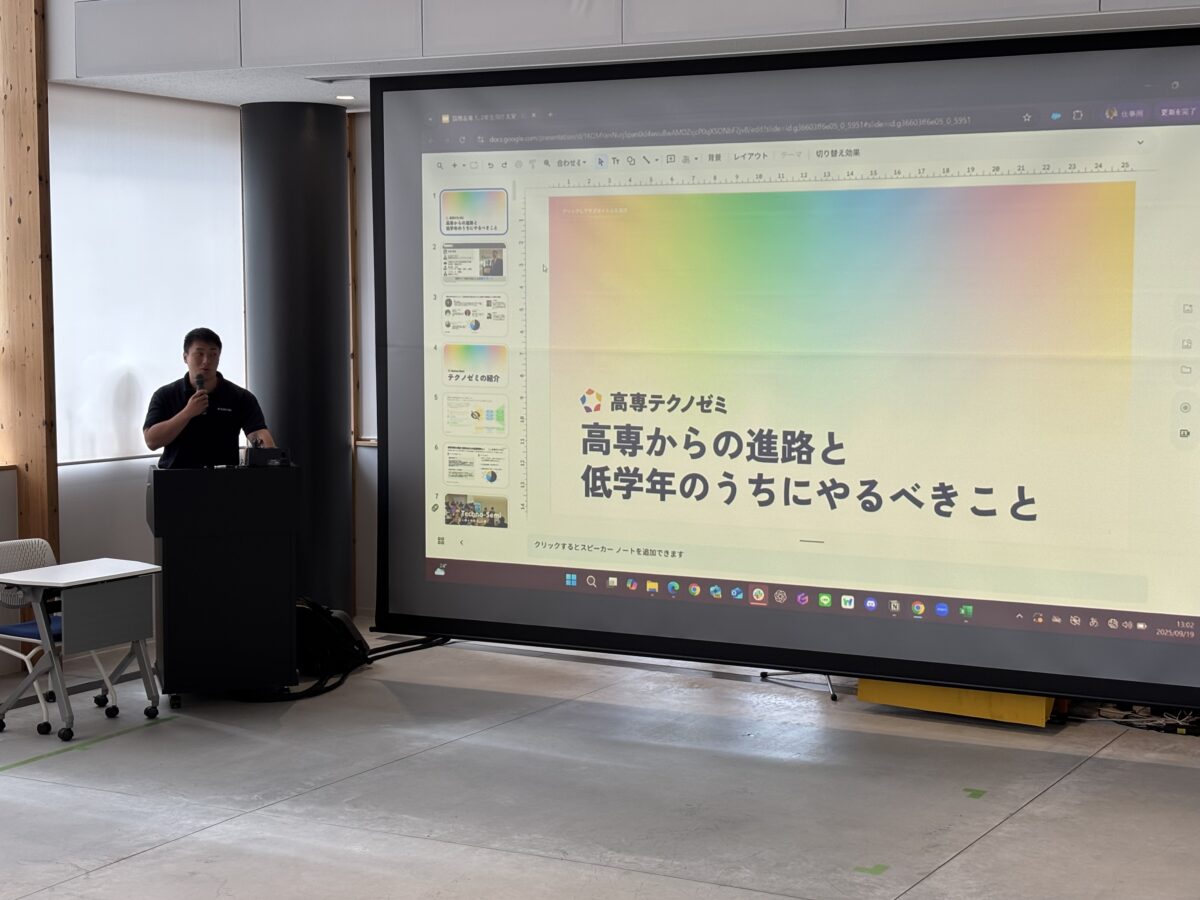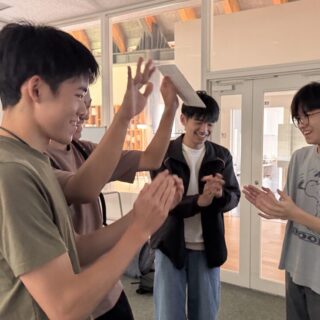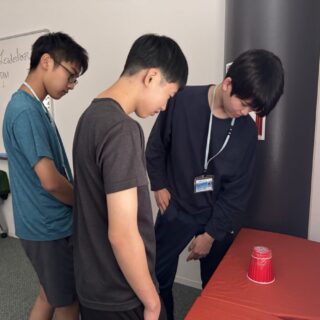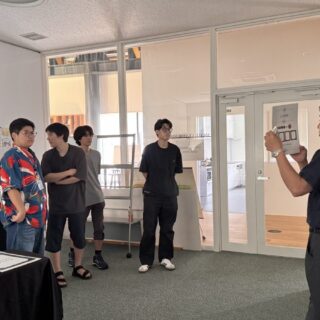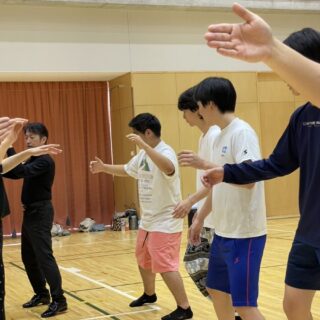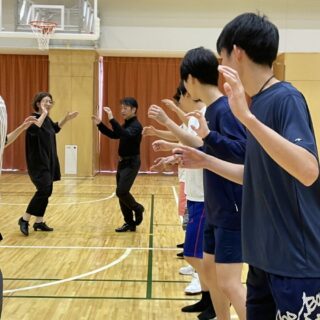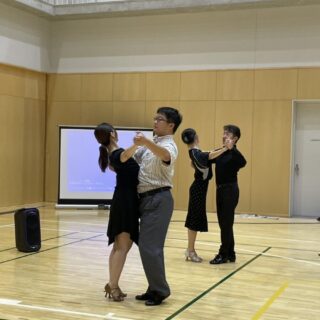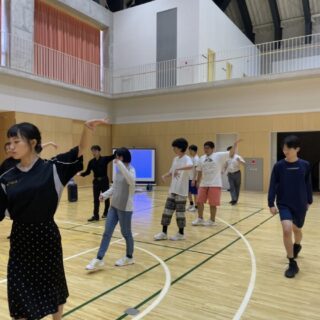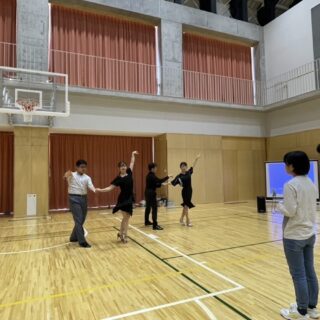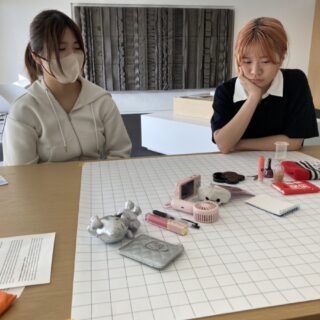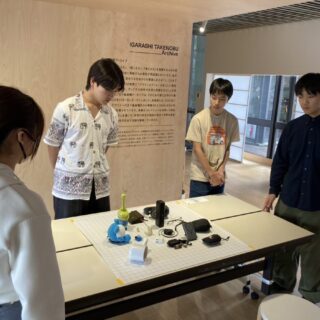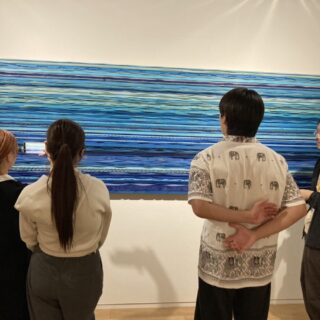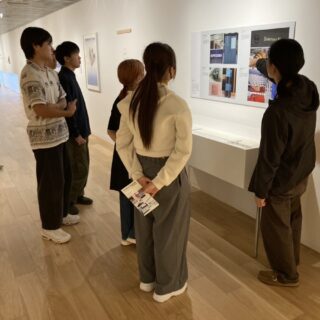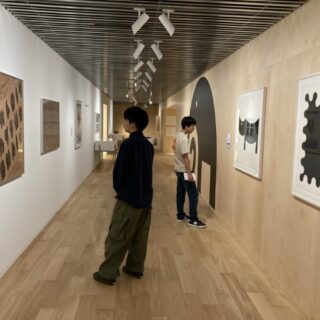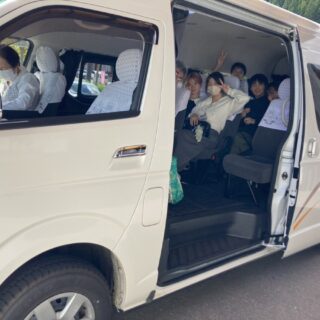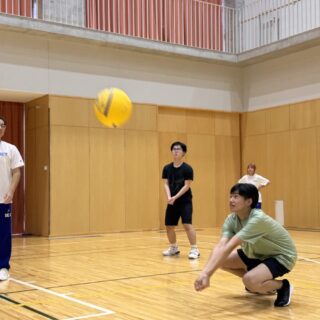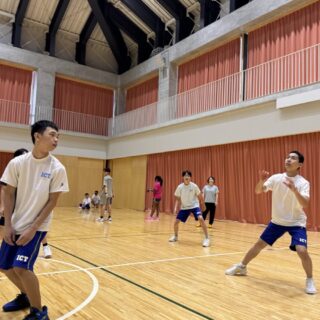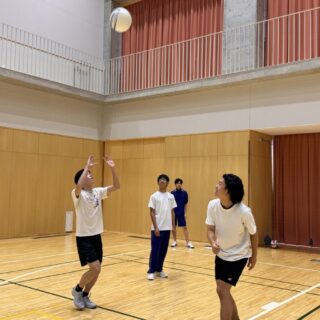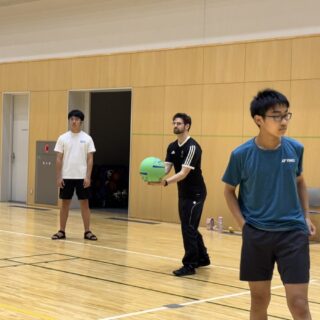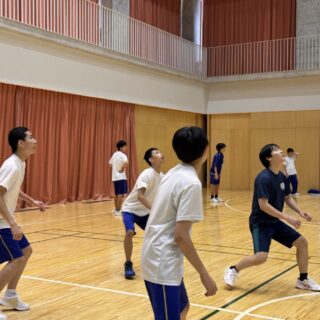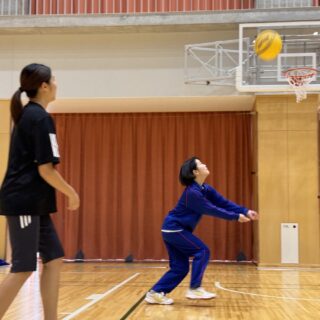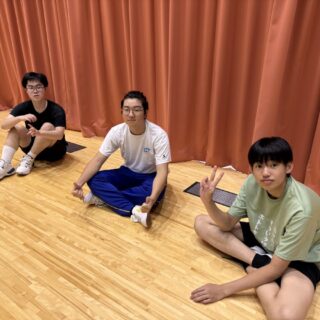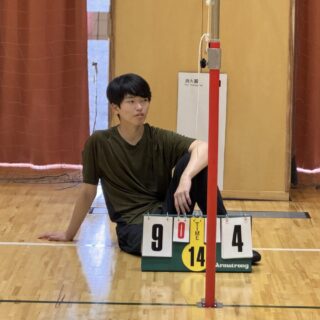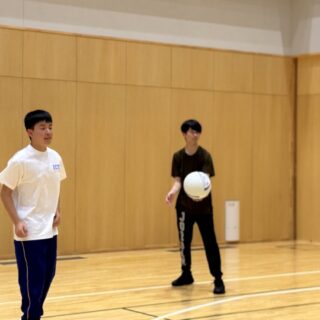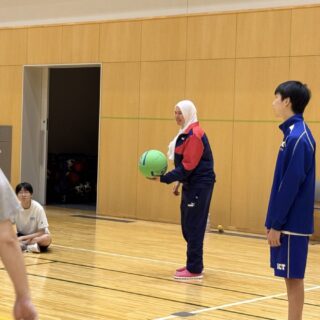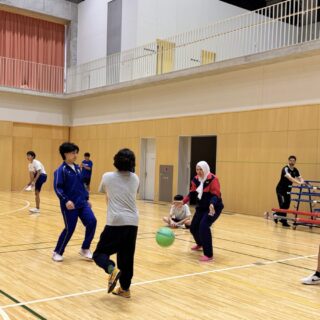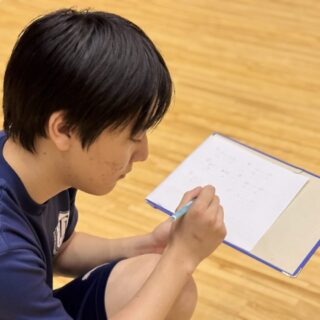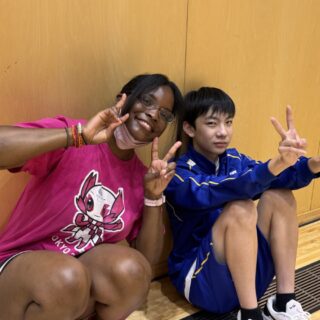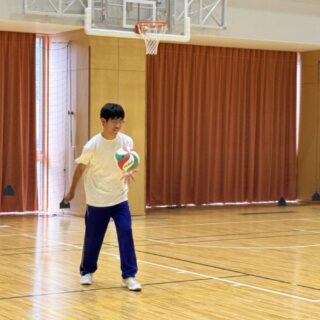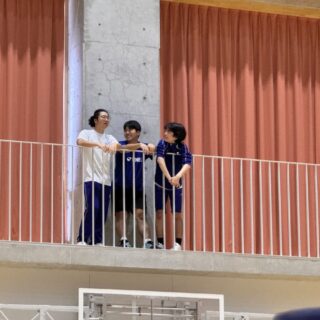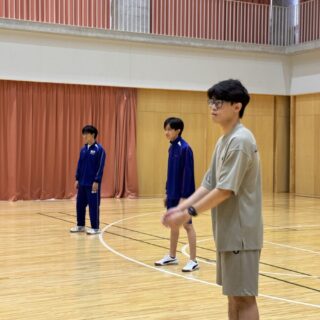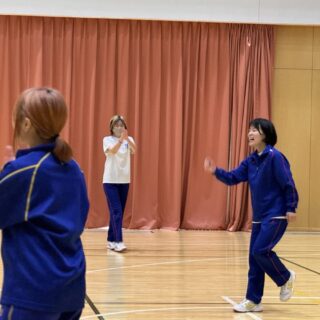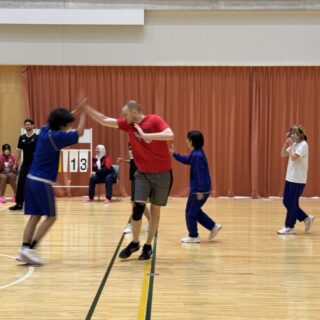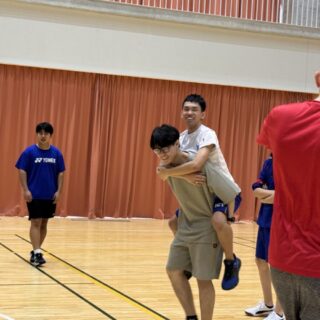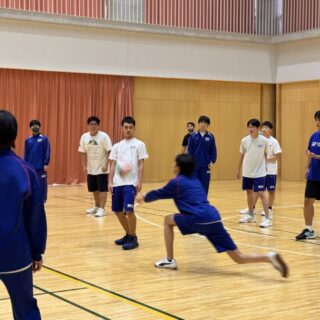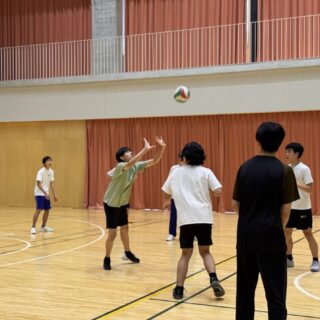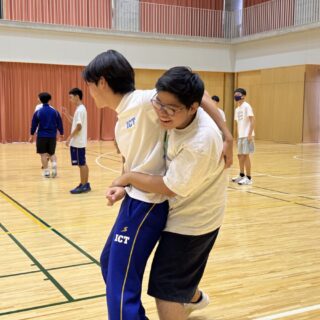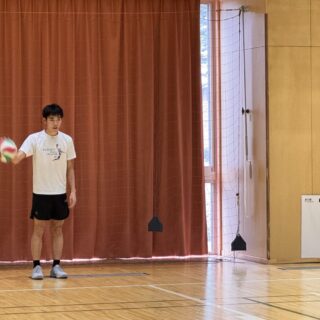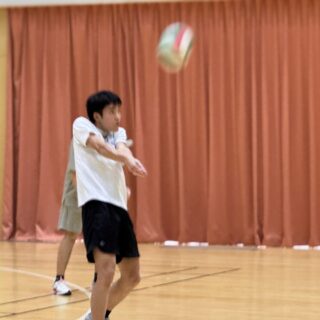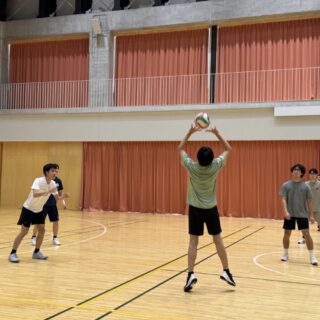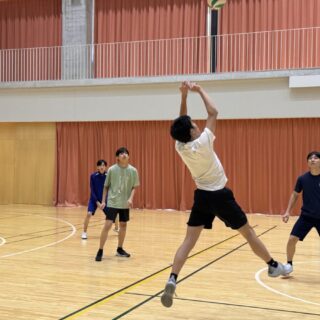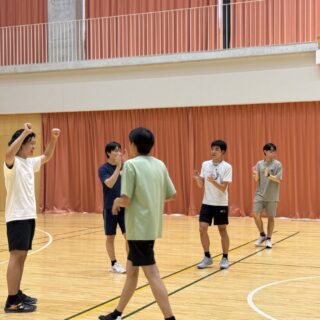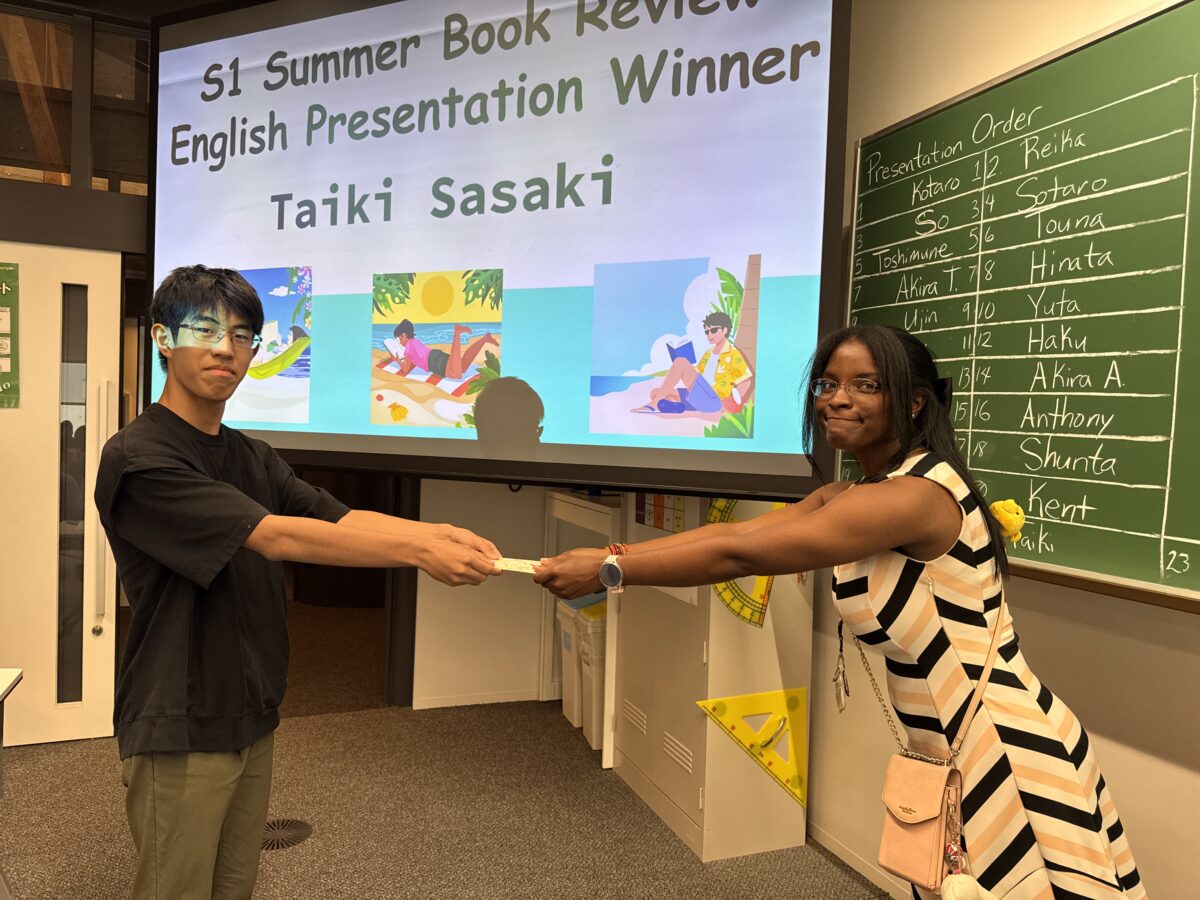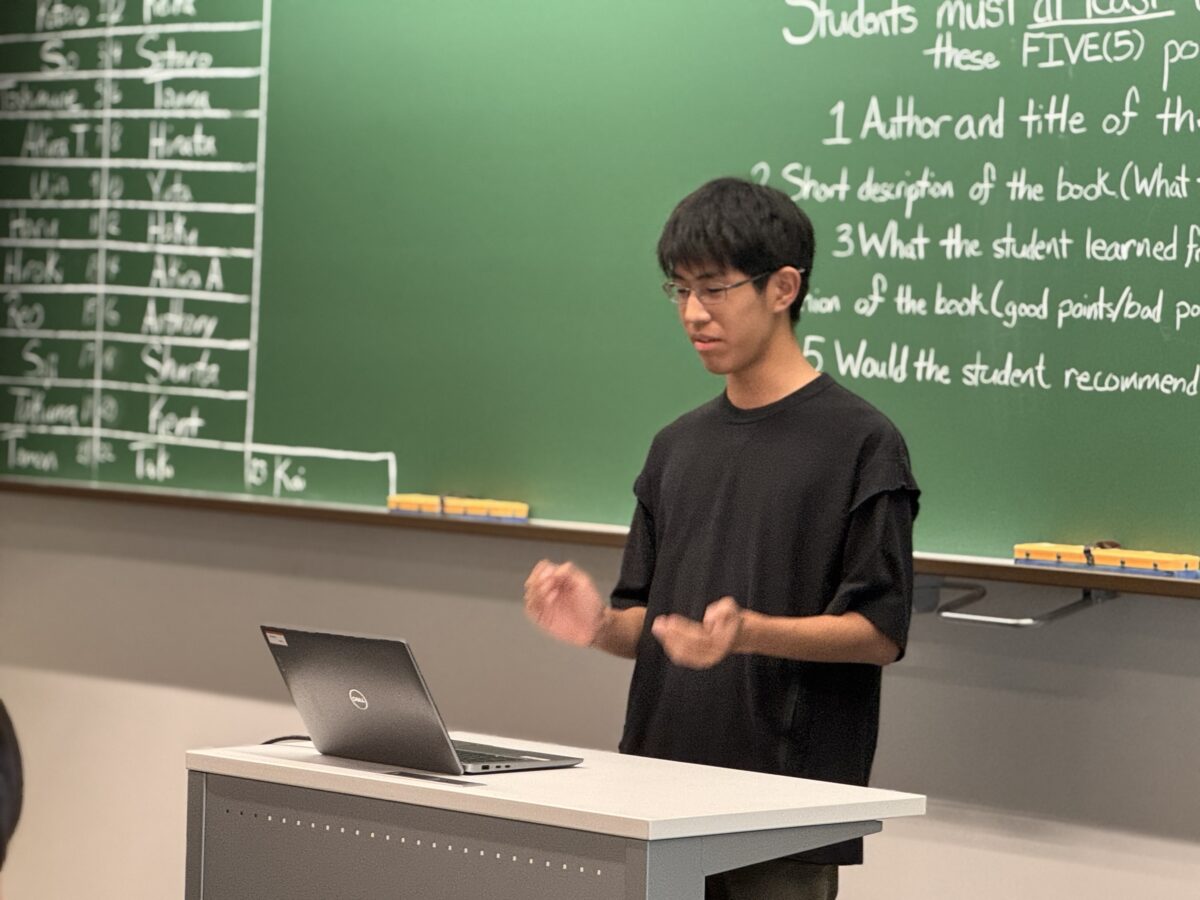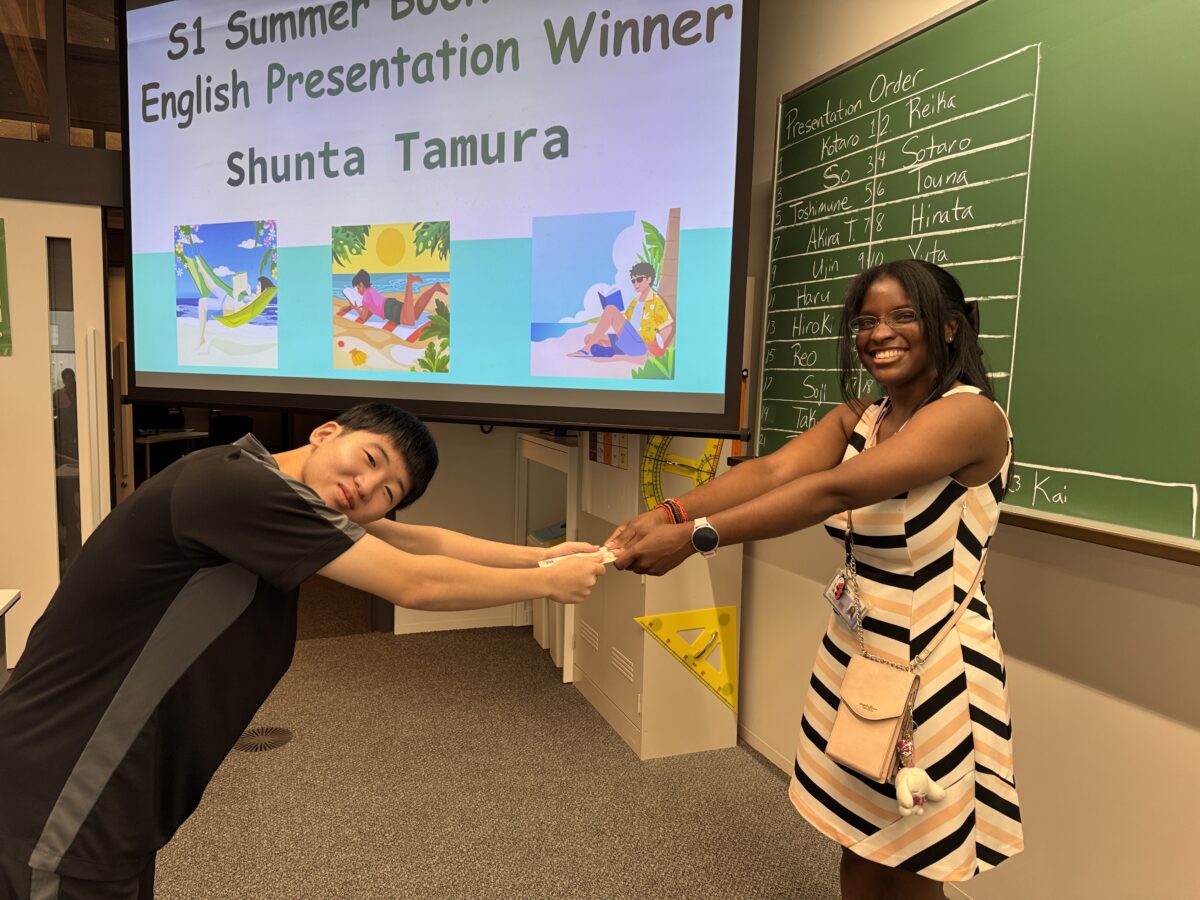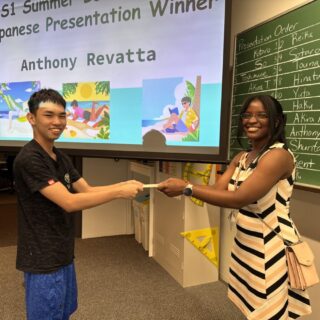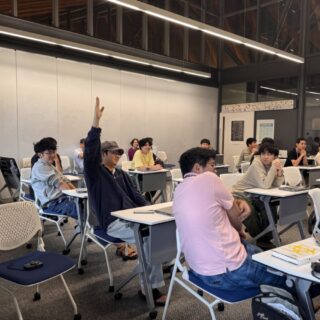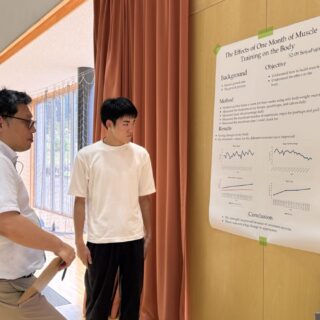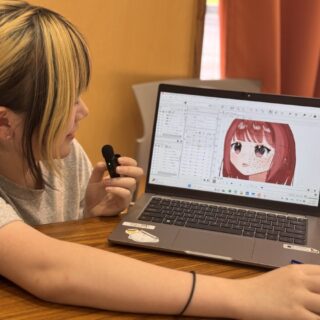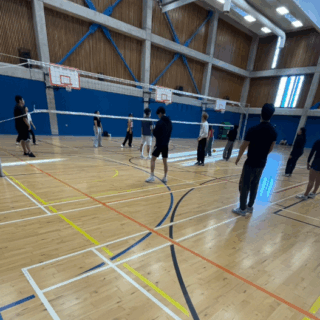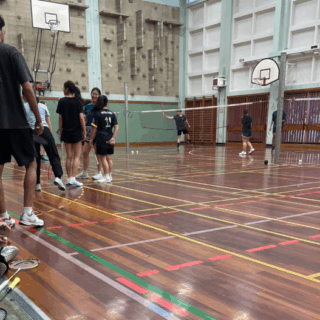
Hello.
I'm Inaba, and my husband and I are in charge of Student Support for ICT students in Dunedin. This time, I, Wakako (the wife), would like to briefly introduce Dunedin and our life here.
We regularly check in with students to support ICT students in making their Otago Polytechnic study abroad experience more fulfilling.
My husband worked at a Japanese energy company for 15 years before coming to study in the MBA program at the University of Otago, which he completed this year. Our family loved life in Dunedin so much that after graduation, he found employment with a local company and we've continued living here.
Dunedin is compact, without the hustle and bustle of a big city, yet not too rural—it's a "just right" kind of town. We often hear from young students that there aren't many places for entertainment, but it's blessed with nature. With beaches and trekking courses just a short distance away, it's perfect for refreshment. I think it's a calm environment where you can really concentrate on your studies.
We've been meeting regularly with ICT students since April, and at first, we noticed they felt confused by the new environment and different culture. However, they've gradually adapted and transformed into confidently enjoying their lives, which makes us feel they're becoming quite resilient.
Next, I'd like to introduce what kind of life we actually lead from a private perspective.
We're a family of five: husband, wife, and children (eldest daughter 7 years old, eldest son 5 years old, youngest son 3 years old).
On holidays, the whole family enjoys various types of activities such as visiting parks, shellfish gathering, fishing, and free museums. Since we lived in Tokyo before coming to Dunedin, we're often overwhelmed by the scale of nature here. Just a five-minute drive from our home, we can see many sheep, horses, and cows leisurely grazing in pastures that stretch far into the distance.
-
At the famous lavender field少し足を伸ばして有名なラベンダー畑へ。遠くには雄大な山並みも見えます。
-
At the beach, 10 minutes from our house. There is a sealion behind them. 家から車で10分のビーチにて。シーライオン(アシカ)によく遭遇します。
Our home is also located partway up a mountain, and from our garden we can see the mountain scenery. In the morning we hear birds singing, during the day sunlight pours down, and when there's a sun shower, rainbows often appear—it's an environment where we constantly feel nature close by.
Dunedin is welcoming spring and moving toward summer. In summer, we have so many things we want to enjoy: swimming at the beach, casual trekking, playing with water and pools in the garden, and more. It's been over a year and a half since we started our life in Dunedin, and we've gotten used to various aspects of clothing, food, and housing, and feel we now have the capacity to enjoy it all.
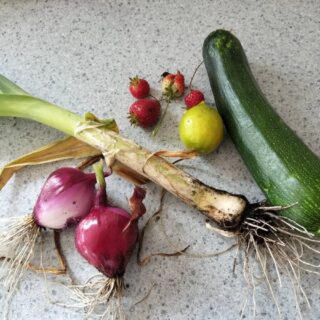
A part of the harvest昨年の収穫物の一部。採れたて野菜はやっぱりおいしいです。
Recently, we've been challenging ourselves with making homemade natto (fermented soybeans) and miso. Through trial and error, we've become able to make natto more consistently and deliciously than before. As for the miso, we prepared it about half a year ago, so it's about time to take it out and taste it. We're also growing vegetables in the garden, and it's very enjoyable for the family to tackle various things together that we probably wouldn't have tried if we were still in Japan. We are gaining new knowledge and experiences.
By the way, our children, who had zero English ability when we first came to Dunedin, have reached the point where they can communicate in daily life almost without any problems in English after only a year and a half (kids are really amazing!). They have long since surpassed me (a wife in my late thirties) in English ability, but I'm trying hard to keep up by attending lessons and such.
We want to continue enjoying our Dunedin life positively as a whole family.
To everyone reading this article, please do reach out to us when you visit Dunedin!
Wakako Inaba
 Hello, this is Yuri Makada from the Hakusanroku Office. The season has turned to autumn, and we can feel the cool breeze in the air. Today, I’d like to introduce some of the extracurricular activities that took place in September.
Hello, this is Yuri Makada from the Hakusanroku Office. The season has turned to autumn, and we can feel the cool breeze in the air. Today, I’d like to introduce some of the extracurricular activities that took place in September.
Not National Language, but Japanese
On Wednesday, September 17th, 2025, Tsutsui sensei gave a special lecture titled “Not National Language, but Japanese”. Tsutsui sensei teaches a Japanese as a second (foreign) language classes for students whose first language is another language.
This time, however, the lecture was aimed at native Japanese speakers. It focused on the fact that even the Japanese we use casually every day has complexities in word choice and grammatical structures. The lecture explored these points and examined how the function of words creates meaning.
Tsutsui sensei commented: “Some students mentioned that they were not confident in Japanese or grammar, but everyone participated actively. I observed students thinking for themselves, gaining insights, and deepening their understanding through group discussions. I also learned new things from their efforts and comments. Unfortunately, we ran out of time and couldn’t cover one of the main topics, the difference between wa (は) and ga (が) so I plan to hold a second session in the next semester. I hope many students will join us again.”
Flower Arrangement and Ikebana Workshop
On Friday, September 19th, 2025, a Flower Arrangement and Kado Class was held, organized by Takako Utsunomiya sensei and Fumi Kuroda sensei. Kazumi Minamikawa sensei (instructor) led the Flower Arrangement course.
First, students created flower arrangements using summer tulip, roses, and statice. After learning from Minamikawa sensei how to use scissors and cut the flower correctly, students completed their own unique works by arranging flowers on special sponges, making the most of each flower’s characteristics and colors.
Next, students split into three groups and tried authentic Ikebana using a flower frog and a water basin, incorporating materials such as beans, lilies, sunflowers, asparagus, hiogi, and pincushions. Referring to Minamikawa sensei’s examples,
students adjusted the height and angle of the flowers while considering overall balance. Each group had a different theme, resulting in a variety of creative and distinctive works.
Students commented, “I was happy to learn about so many different flowers and to finish something beautiful.” Their works were displayed in the entrance and common spaces of the Hakusanroku Campus, creating a bright and elegant atmosphere throughout the school.
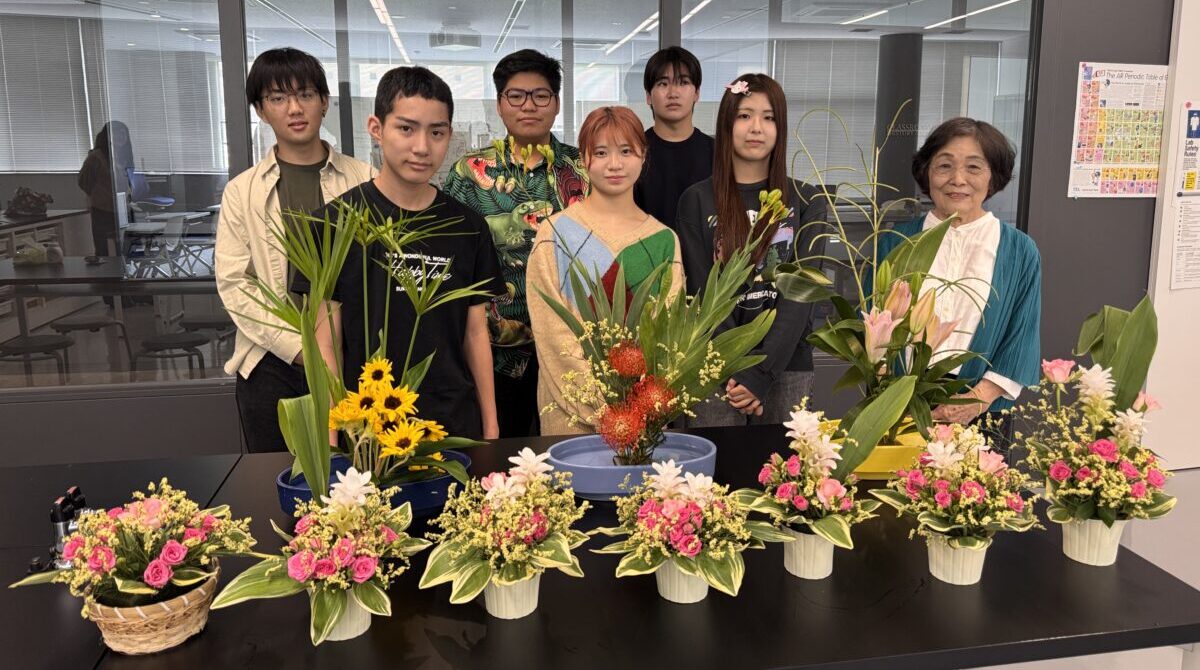
Career Support for KOSEN Students
On Friday, September 19th, 2025, a lecture titled “Career Support for KOSEN Students” was held for 1st and 2nd year students. This lecture was giving by Mr. Tatsuya Taian from OLIENT TECH Co., Ltd.
After graduating from a KOSEN, students generally have two main paths: employment or further education. Traditionally, most students choose employment, but in recent years, the proportion of students aiming for further studies has increased.
Mr. Taian provided advice on both employment and further education, explaining their respective advantages and disadvantages, as well as how to approach job hunting and academic preparation. He concluded his lecture with the following encouraging words for the students: “Looking ahead to your future, gathering information early, and preparing in advance will lead to satisfying career and academic choices.”
The Secret of the Crest Vault: STEM Themed Escape Room
On Monday, September 22nd, 2025, Domyson Abuan sensei and Sharmee Abuan sensei hosted an activity titled “The Secret of the Crest Vault: STEM-Themed Escape Room.” Students worked together to solve STEM-related puzzles and riddles in order to escape from a locked room.
For each challenge they cleared, one digit of a four-digit passcode was revealed, with each digit representing a concept related to Science, Technology, Engineering, or Mathematics.
Using their knowledge, teamwork, and quick decision-making skills, the students successfully gathered all four digits, completed the passcode, and unlocked the door to escape. Impressively, the winning team solved the puzzles in just 3 minutes and 48 seconds!
Shall We Dance?
On Friday, September 26th, 2025, Justin Han sensei and Stephanie Reynolds sensei hosted an activity titled “Shall We Dance?”. On this day, two professional dance instructors and two volunteer dancers were invited, and students learned the basic steps of four types of ballroom dance (Waltz, Blues, Cha-Cha-Cha, and Jitterbug).
In these dances, the usual roles are that men lead and women follow, each performing complementary movements. The Dance instructors focused on teaching the students the steps in each type of dance that are performed by both the leader and the follower. After learning the fundamental movements and counts, students paired up and practiced to music, experiencing the joy of dancing.
Justin sensei commented: “At first, the students struggled with the motions and rhythm of the steps, but as they practiced, they greatly improved. The students expressed their enjoyment of the class while some students even asked about making it more permanent!”
Igarashi Takenobu Archive
On Friday, September 26th, 2025, five 1st and 2nd year students visited the Igarashi Takenobu Archive at KIT. This archive, established in 2023 for the purpose of fostering aesthetic education, houses approximately 5,000 works and materials donated by the sculptor and designer, Mr. Takenobu Igarashi.
The students toured the gallery and received explanations about the exhibited works and the artist. In the workshop, students brought four small everyday items, arranged them on graph paper, and looked for commonalities. They organized the items by aspects such as color, shape, and chronology, and then summarized differences in thinking within their groups.
Through this experience, the students cultivated observation and creativity through the act of “seeing.
Soft Volleyball & Volleyball Tournament
On Monday, September 29th, 2025, a hike to Mt. Hakusan and Mt. Sanpoiwa was originally planned, but due to rain, it was canceled. Instead, a Soft Volleyball & Volleyball Tournament was held, organized by Philip Cadzow sensei, where 1st and 2nd year students and faculty enjoyed playing together.
The event started with soft volleyball. Seven-minute matches were played one after another, with teams giving their all and cheering each other on. Next came the volleyball matches, where every successful spike or receive drew cheers and loud support. Teachers and students teamed up, encouraging each other and playing with a sense of unity. An original game was also introduced, where all participants split into two large teams and everyone joined the court. This game featured a special rule allowing up to four touches before returning the ball to the opponent’s side, making full use of the large number of players and fostering teamwork to keep the ball in play. Finally, an intense match between 1st and 2nd year students took place! From the start, the 2nd years dominated with strong teamwork and powerful plays. The 1st years fought back bravely, but ultimately, the 2nd years’ coordination and focus led them to victory.
Book Review Presentation by 1st Year Students
On Wednesday, September 25th, 2025, a book review presentation was held for 1st year students. The students presented for up to 3 minutes on the books they read during summer vacation (with no restrictions on genre), sharing what they learned and their impressions. Japanese students read English books and presented in English, while international students read Japanese books and presented in Japanese. The students presented about a variety of genres, including fantasy, adventure, biography, and mystery. Some students created animations based on the book’s storyline, while others showcased pencil sketches depicting a scene from the story.
After the presentations, a vote was held among the students and faculty to select the best presentations. Two students were chosen as the winners of the English presentations (Japanese students) and one student was chosen as the winner of the Japanese presentations (International students). The results are as follows.
English Presentation Winner: Taiki Sasaki
English Presentation Winner: Shunta Tamura
Japanese Presentation Winner: Burba Anthony Revatta
-
Title:おでん (Oden)Title:おでん
-
Anthony received many questions from his classmates about the book he had read.クラスメイトから、アントニーさんが読んだ本についてたくさん質問されました。
-
A big round of applause was given to Anthony, who was able to give his entire presentation in Japanese!日本語を流暢に話すことができたアントニーさんに盛大な拍手が送られました!
Yuri Makada
 I am Michihiro Hayashi, and I serve as a faculty advisor for the KOSEN Robocon (KOSEN Robot Contest) teams.
I am Michihiro Hayashi, and I serve as a faculty advisor for the KOSEN Robocon (KOSEN Robot Contest) teams.
The Tokai-Hokuriku Regional Competition of the KOSEN Robocon is an annual event in which our students regularly participate, was held on Sunday, October 5th, 2025. This year, we joined the competition with a total of 12 students: four students from Kanazawa Campus as Team A, and eight students from Hakusanroku Campus as Team B.
Each year, the contest features a different theme, requiring teams to design and build entirely new robots between the theme announcement in mid-April and the regional competition in early October. The 2025 theme was “Great High Gate.” Robots were tasked with stacking cardboard boxes to form a gate, through which a cart carrying a team member would be pulled by the robot. The higher the gate, the more points awarded.
Let me introduce the teams and their robots.
Team A: Koubako Club (Kanazawa Campus)
Team A consists of four 4th year students. Their robot was inspired by the local delicacy Koubako-gani (female snow crab), and its role was to transport a pre-assembled gate of stacked boxes to a designated location. We interviewed team leader Haruki Ohta, operator Haruto Shiraishi, cart rider Imaru Oishi, and pit mechanic Shiyu Sano.
Comments from Team A Members:
[Haruki Ohta]
 I returned home during summer break to obtain my driver’s license, and I regret not being able to contribute much to the robot’s construction during that time. However, after obtaining my license, I was able to dedicate more time in the second semester and feel I contributed to the team’s success.
I returned home during summer break to obtain my driver’s license, and I regret not being able to contribute much to the robot’s construction during that time. However, after obtaining my license, I was able to dedicate more time in the second semester and feel I contributed to the team’s success.
[Haruto Shiraishi]
 I was nervous during the match, and my robot operation was a bit shaky at times. Still, we achieved our target score in the first match and won. We’ve been recommended for the national competition, so I’ll continue to give it my all.
I was nervous during the match, and my robot operation was a bit shaky at times. Still, we achieved our target score in the first match and won. We’ve been recommended for the national competition, so I’ll continue to give it my all.
[Imaru Oishi]
 I dressed as a seafood shop clerk handling Koubako-gani while riding the cart. Although I’m not skilled in robot design or assembly, my light weight and slender build helped the robot pull the cart and pass through the gate smoothly. I was the one waving to the audience during the exhibition.
I dressed as a seafood shop clerk handling Koubako-gani while riding the cart. Although I’m not skilled in robot design or assembly, my light weight and slender build helped the robot pull the cart and pass through the gate smoothly. I was the one waving to the audience during the exhibition.
[Shiyu Sano]
 I oversaw manufacturing and assembling robot parts. The robot performed smoothly without any malfunctions or damage during the competition. After the matches, I was so exhausted that I fell asleep in the pit area—and was caught on NHK’s camera! I wonder if that footage will be broadcast.
I oversaw manufacturing and assembling robot parts. The robot performed smoothly without any malfunctions or damage during the competition. After the matches, I was so exhausted that I fell asleep in the pit area—and was caught on NHK’s camera! I wonder if that footage will be broadcast.
Although Team A was eliminated in the preliminary league with one win and one loss, their robot’s gate transportation function was highly praised, earning them the Technical Award and a spot in the national competition. We hope they continue to excel at the national level.
Team B: Hakobou (Hakusanroku Campus)
Team B consists of 1st and 2nd year students. Their robot mimicked the mechanism of a container crane used in port cargo operations. Decorated with black-and-yellow hazard stripes and a red rotating beacon, it embodied the look of a working vehicle. The robot lifted and stacked boxes using a hand that opens and closes like a crane and an extendable arm.
Although eight members participated in the regional competition as per the rules, a total of 11 students were involved in robot development and practice. Even those not selected as players played vital behind-the-scenes roles. We interviewed team leader and operator Kaishu Ishiharada, and support member Akira Terashima.
Comments from Team B Members:
[Kaishu Ishiharada]
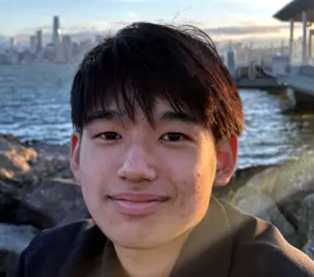 This year, we reflected on past experiences and maintained a positive team atmosphere. As a result, we completed the robot earlier than usual and had ample time for practice. I was less nervous during the matches, which I believe contributed to our strong performance (Top 4). I hope to continue working hard with my teammates next year.
This year, we reflected on past experiences and maintained a positive team atmosphere. As a result, we completed the robot earlier than usual and had ample time for practice. I was less nervous during the matches, which I believe contributed to our strong performance (Top 4). I hope to continue working hard with my teammates next year.
[Akira Terashima]
 Although I joined the regional competition as part of the cheering squad, which was a bit disappointing, I had the opportunity to observe many robots from other schools. It was a valuable experience, and I hope to apply what I learned in future competitions.
Although I joined the regional competition as part of the cheering squad, which was a bit disappointing, I had the opportunity to observe many robots from other schools. It was a valuable experience, and I hope to apply what I learned in future competitions.
Team B advanced through the preliminary league undefeated and reached the final tournament. They continued to win until the semifinals, where they narrowly lost to the eventual champion, finishing in the Top 4. Their robot performed consistently and reliably in all matches. Despite the pressure, Team B operated the robot flawlessly, a testament to their thorough preparation.
This year, both teams succeeded in getting their robots operational early, allowing for repeated match-style practice. Problems identified during practice were addressed through design improvements and strategic adjustments. These approaches closely align with engineering design principles and could be effectively applied in classroom settings as well.

A 2nd year student adjusting the robot, watched by a 1st year student (Team B)キャンパスでロボットの調整をする2年生と見守る1年生(Bチーム)
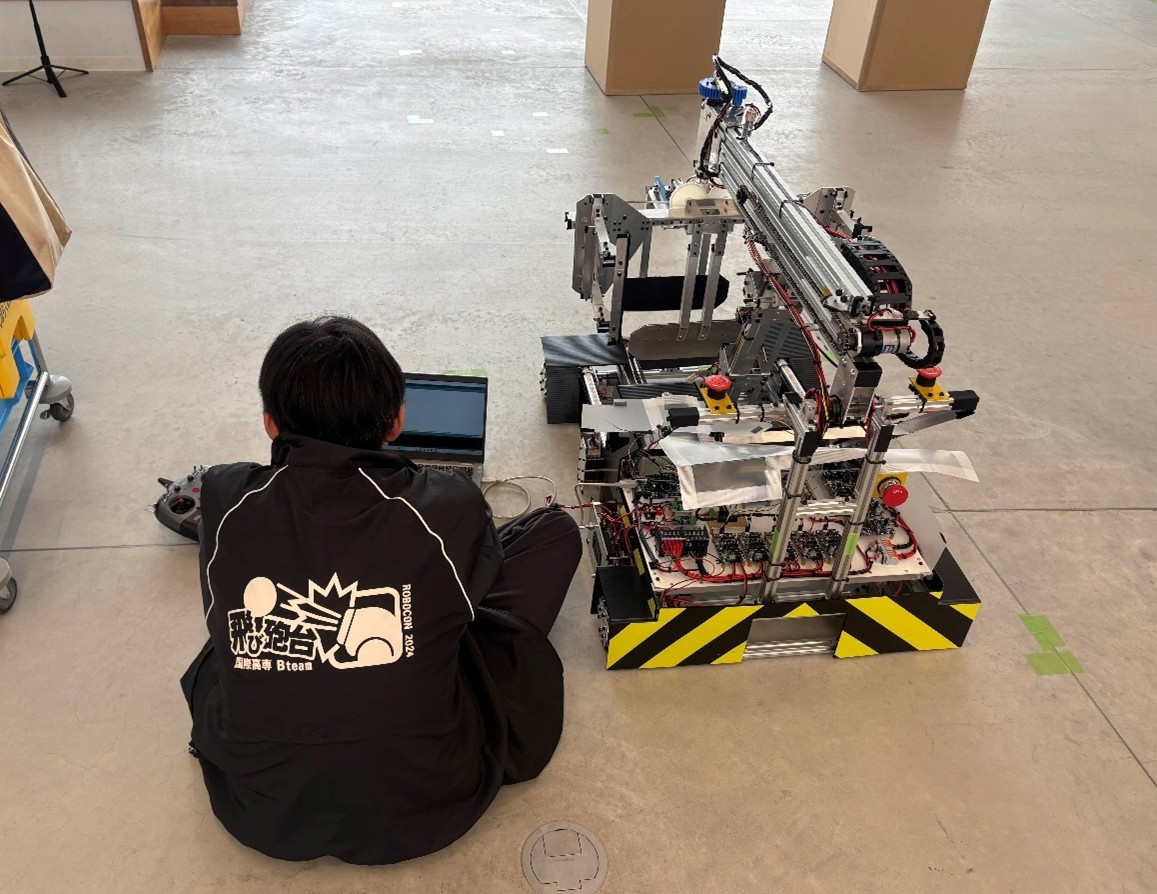
A 2nd year student in last year’s uniform adjusting the robot (Team B)去年のユニフォームを着てロボットを調整する2年生(Bチーム)
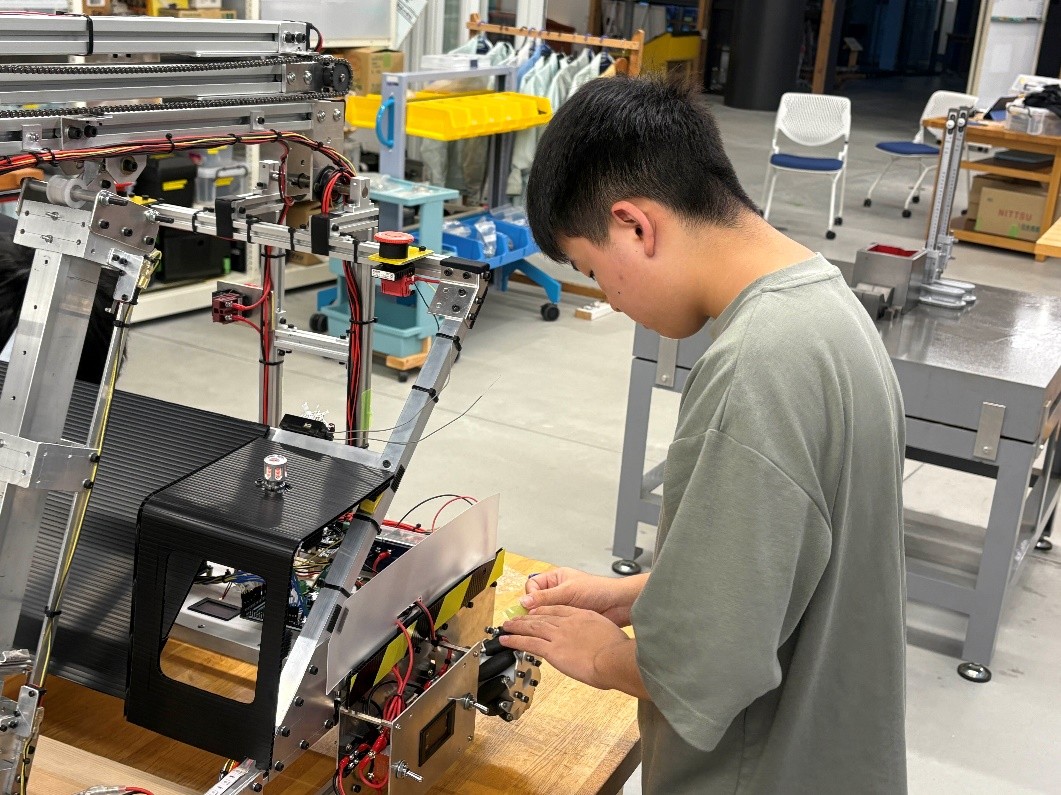
A 1st year student cleaning dirt off the tires タイヤについた汚れを取り除く1年生

Team A practicing at the main entrance hall 正面玄関ホームで練習するAチーム

Team A being interviewed after their victory勝利チームインタビューを受けるAチーム

Team A looking a bit tired after the matchちょっとお疲れの様子のAチーム

Team B celebrating their effortsがんばったBチーム
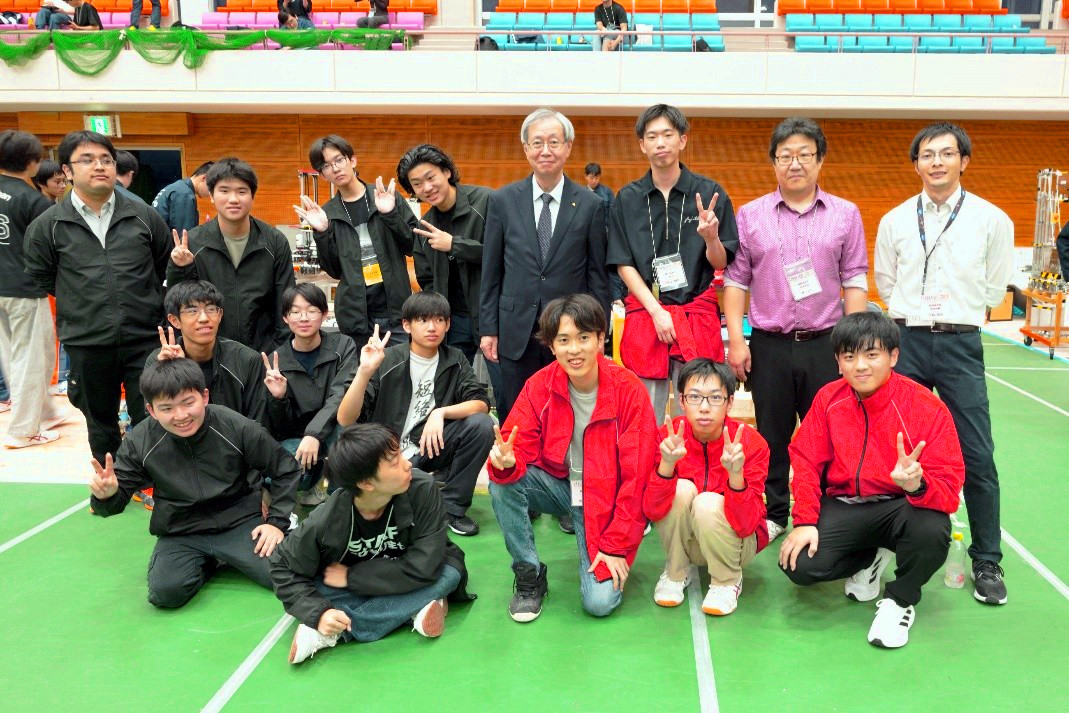
The principal surrounded by staff and participants after the competition大会終了後に関係者に囲まれる校長先生
[About KOSEN Robocon]
KOSEN Robocon began in 1988. It is a nationwide educational event designed to inspire young people to think independently and experience the joy of building robots with their own hands. Each year, students from colleges of technology across Japan tackle a new challenge, using their creativity and ingenuity to design and build robots that compete in various tasks. Celebrating its 38th edition in 2025, the contest continues to emphasize the importance of original ideas and the excitement of engineering.
[NHK ROBOCON Tokai-Hokuriku Regional Competition]
TV station: NHK General TV
Date & Time: Saturday, November 8, 2025, at 10:40 AM
Note: It is also available on NHK ONE.
https://www.web.nhk/tv/an/robocon/pl/series-tep-J8Y25YN2QG/ep/8ZV3KYQ55G
 Hello everyone, I’m Meguru Ito, a physics teacher. Today, I’d like to talk about our annual STEM Fair, in this case STEM Fair 2025.
Hello everyone, I’m Meguru Ito, a physics teacher. Today, I’d like to talk about our annual STEM Fair, in this case STEM Fair 2025.
The STEM Fair is a venue for presenting the outcomes of the ICT’s summer assignment, the Summer STEM Project, and it is held every year in late September. Simply put, it’s a showcase for summer independent research. Students choose their own themes, but this year, the ideas from 1st year students were especially unique, with many topics we’ve never seen before. Since ICT was founded eight years ago, this is the eighth STEM Fair (or the fifteenth if we include the 2nd year presentations), and it’s always exciting to encounter fresh ideas every year.
What stood out this time was how much time and effort many students invested in ttheir experiments and production. For example, some caught dozens of fish to examine their organs for plastic contamination, others jumped about 3,000 times to study the effect on height, created animations by drawing dozens of frames, circled a local peninsula to investigate marine debris, or walked 7 km under the blazing sun.
Although each presentation consists of just one poster and about ten minutes of explanation, imagining the effort and time behind them is truly moving.
Personally, I love these “just give it a try!” projects. Even if they’re not scientifically perfect, I want to recognize that enthusiasm. Of course, for a proper presentation, using charts and tables and drawing conclusions from them is also important, so I made sure to convey that to the students.
Thanks to the students’ hard work and the teachers’ support, the STEM Fair has become a signature event at the Hakusanroku Campus. While 1st and 2nd year students’ projects aren’t advanced research yet, seeing their ideas and interests take shape is incredibly enjoyable. I hope we can keep this event going for years to come.
Meguru Ito
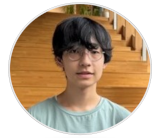 Hello, my name is Kaya Yasuda. I am a 3rd year student at ICT. It has already been six months since I arrived at Dunedin International Airport. I’ve gradually gotten used to life in New Zealand, and I’m now enjoying every day here. In this journal, I’d like to introduce what my new daily life looks like after these six months.
Hello, my name is Kaya Yasuda. I am a 3rd year student at ICT. It has already been six months since I arrived at Dunedin International Airport. I’ve gradually gotten used to life in New Zealand, and I’m now enjoying every day here. In this journal, I’d like to introduce what my new daily life looks like after these six months.
First, I’ll talk about my host family. My host family is a woman who lives with two dogs. To be honest, before coming here, I imagined a host family with parents and children. I thought we would have barbecues together and join various family events. So, when I received my homestay information during the spring holidays and read that she “lives happily with two dogs,” I couldn’t quite imagine what my life would be like and felt a little nervous.
However, once the homestay began, I realized she was a kind person and a great match for me. We do things like having meals, walking the dogs, and going shopping at our own pace, which makes living together feel very comfortable. Our dinner conversations are always enjoyable—not only about school or studying, but also about funny stories from her work or the mobile games she’s into lately. Sometimes she suddenly says, “I feel like ice cream,” and takes me to a drive-through, and every Friday and Saturday night, we go to her friend’s house for dinner. I think this kind of lifestyle, just the two of us, is something I wouldn’t have experienced in a typical host family stay, and I really enjoy it.
Next, I’d like to talk about how I spend my time outside of class. Classes here in Otago Polytechnic usually run from around 10 a.m. to 3 p.m., and even on longer days, they finish by 5 p.m. After class, I often go to the university gym located near my school. The gym isn’t just for sports—it also has a fitness area, pool tables, and even a café, so there are many ways to have fun. The facility is open not only to students from the polytechnic I attend but also to students from the University of Otago, and anyone can use it if they become a member. Because of that, I’ve been able to make friends with people my age, university students, and even working adults.
There are also many international students who use the gym, from countries such as Korea, Singapore, Australia, and Japan. It’s always fun meeting new people. Especially when I meet Japanese students, there’s a special sense of comfort—a feeling of connection that’s a bit different from other friendships. While I often play badminton and volleyball with my ICT classmates, sometimes students from other countries join in naturally. Other times, I start by asking them to help me practice setting or serving. Before we know it, more people gather, and we end up having a small match. Everyone is very open and friendly, and many try to speak the simple Japanese they know. It’s always a fun and warm atmosphere.
Recently, the days have become much longer, and it stays bright even after 8 p.m. After leaving the gym, I often go out for dinner with friends or take a run to the beach. I really enjoy spending my evenings freely and actively.
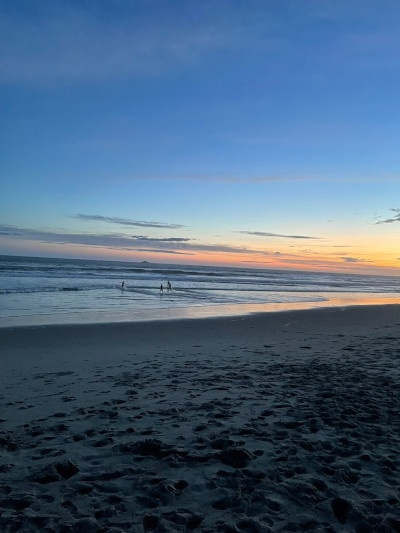
Running toward the beach at sunset 走って向かった夕暮れのビーチ
I’ve now completely settled into life in New Zealand, and the days are flying by. Since the term is almost over and exams are coming up soon, I’d like to focus on studying hard as well.
Kaya Yasuda









